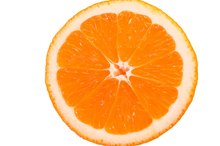What does fact checked mean?
At Healthfully, we strive to deliver objective content that is accurate and up-to-date. Our team periodically reviews articles in order to ensure content quality. The sources cited below consist of evidence from peer-reviewed journals, prominent medical organizations, academic associations, and government data.
- National Institutes of Health: Allergy Problems From “Hidden” Corn
- National Institutes of Health: Allergy Problems From “Hidden” Corn
- NIH: Food Allergy
- Mayo Clinic: Food Allergy
The information contained on this site is for informational purposes only, and should not be used as a substitute for the advice of a professional health care provider. Please check with the appropriate physician regarding health questions and concerns. Although we strive to deliver accurate and up-to-date information, no guarantee to that effect is made.
Glucose Allergy Symptoms
Because the human body depends upon glucose synthesis for cellular energy, corn allergies probably produce the symptoms of a perceived glucose allergy 2. According to the National Institutes of Health, most commercial sugars—forms of glucose—are derived from corn 1. Sensitized patients will suffer allergic reactions upon ingesting the glucose compounds in corn syrup, corn starch and more highly processed form of corn. Individuals who get allergy symptoms from glucose ingredients in foods will probably get them from dextrose, fructose and other types of corn products 2.
If you are experiencing serious medical symptoms, seek emergency treatment immediately.
Inflammatory Symptoms
Allergic reactions to corn, glucose intravenous solutions and even skin care items may initiate the same symptoms immediately, beginning with itching at the point of contact. The NIH notes that eating corn foods may induce itching or tingling in the mouth. This may be followed by swelling that involves the lips, lining of the mouth, tongue and throat.
These allergy symptoms may then expand to include the face or eye area 2. A soap, deodorant or cosmetic that contains corn compounds, sometimes used as dyes, flavorings or preservatives, will cause symptoms where it touches the skin. Ingesting corn-derived glucose either orally or through the skin can produce a red rash or hives anywhere on the body.
- Allergic reactions to corn, glucose intravenous solutions and even skin care items may initiate the same symptoms immediately, beginning with itching at the point of contact.
Pain
Foods Containing Glucose or Fructose
Learn More
Swollen tissue can become tender and rashes painful to the touch. The Mayo Clinic reports that inflammation from the histamines released during an allergic reaction can also result in headaches or migraine attacks 3. These allergy symptoms may linger after digestive problems have gone 2.
Respiratory Symptoms
In some people who experience acute inflammation from corn allergies, respiratory trouble will occur. Irritation from itching and swelling in the mouth and throat can block the airways. The University of Maryland (UM) Medical Center relates that throat tightness may cause problems in swallowing or getting enough air into the lungs 4. A shortness of breath or wheezing may indicate the development of an emergency condition.
- In some people who experience acute inflammation from corn allergies, respiratory trouble will occur.
- Irritation from itching and swelling in the mouth and throat can block the airways.
Anaphylaxis
Potato Allergy Symptoms
Learn More
When cardiovascular changes accompany these respiratory disturbances, the most severe type of allergic reaction, anaphylaxis, has begun. Medical help should be requested by dialing 911, counsels the NIH. As blood pressure drops, allergy symptoms that include an uneven pulse and fainting may be followed by cardiac and respiratory arrest 2.
Digestive Symptoms
Within an hour or two after eating an irritating food or medicine, corn allergies will upset the digestive system. The UM Medical Center includes feelings of nausea, stomach pain and cramping among common symptoms. Patients may also have severe vomiting or sudden diarrhea until the glucose allergens have passed out of the body.
Related Articles
References
- National Institutes of Health: Allergy Problems From “Hidden” Corn
- NIH: Food Allergy
- Mayo Clinic: Food Allergy
- University of Maryland Medical Center: Food Allergies
- American College of Allergy, Asthma & Immunology. Corn Allergy. Updated March 8, 2019.
- Inam M, Shafique RH, Roohi N, Irfan M, Abbas S, Ismail M. Prevalence of sensitization to food allergens and challenge proven food allergy in patients visiting allergy centers in Rawalpindi and Islamabad, Pakistan. Springerplus. 2016;5(1):1330. doi:10.1186/s40064-016-2980-0
- Gonzales-Gonzalez, V., Diaz, A., Fernandez, K., and M. Rivera. Prevalence of Food Allergens Sensitization and Food Allergies in a Group of Allergic Honduran Children. Allergy, Asthma, and Clinical Immunology. 2018. 14(1):23.
- American Academy of Allergy, Asthma & Immunology. Anaphylaxis.
- Sicherer SH, Sampson HA. Food allergy: A review and update on epidemiology, pathogenesis, diagnosis, prevention, and management. J Allergy Clin Immunol. 2018;141(1):41-58. doi:https://doi.org/10.1016/j.jaci.2017.11.003
Writer Bio
Nancy Clarke began writing in 1988 after achieving her Bachelor of Arts in English and has edited books on medicine, diet, senior care and other health topics. Her related affiliations include work for the American Medical Association and Oregon Health Plan.









